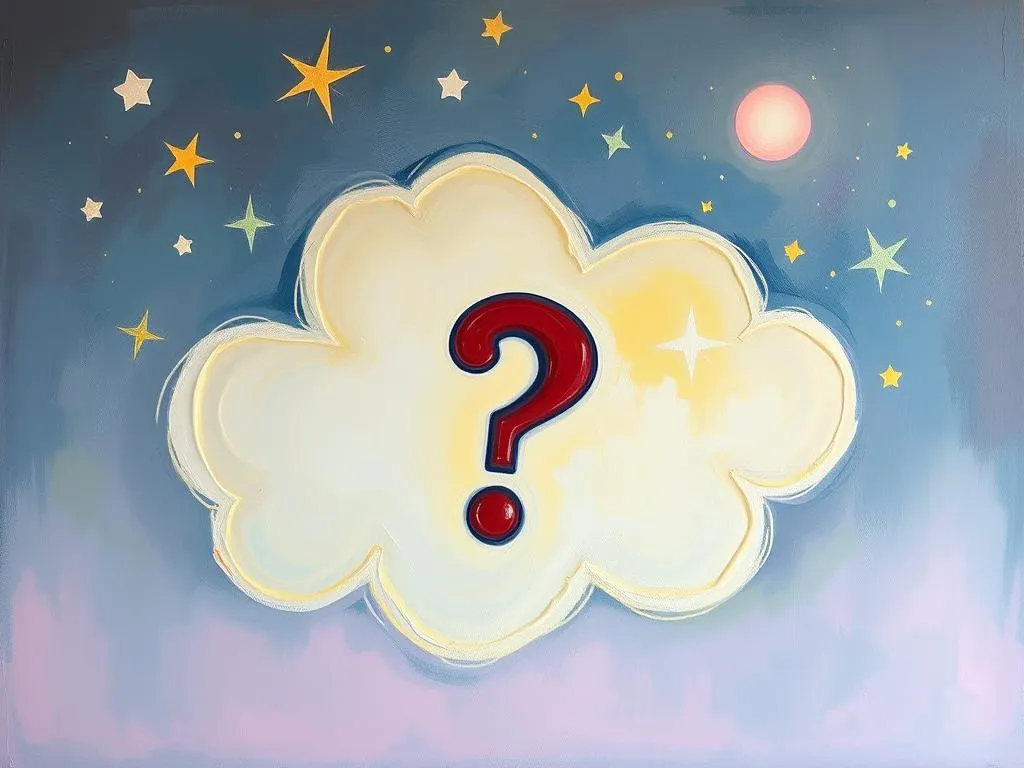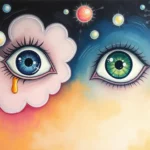
Ever woken up from a vivid dream, heart racing, and thought, “What in the world did that mean?” Dreams often serve as a window into our subconscious, revealing hidden fears, desires, and emotions. Yet, as we dive into the world of dream interpretation, it’s easy to trip over common mistakes, leading us down paths of misunderstanding. Just like a misinterpreted text message, dreams can be misleading if we don’t consider their broader context.
Imagine dreaming of a snake and immediately panicking, convinced it symbolizes betrayal or danger. While this interpretation might hold weight in certain cultures, it’s essential to recognize that dreams are incredibly personal. A snake could also represent transformation, shedding old skin to embrace a new phase of life. In this article, we’ll explore how to navigate the complexities of dream symbols, helping you discern between universal meanings and personal significance.
Symbolic Missteps: The Art of Interpretation
Diving into the realm of dream symbolism can feel like wandering through a maze. Each twist and turn presents new meanings shaped by cultural, psychological, and personal interpretations. Here are some common symbolic missteps to avoid on your journey:
-
Assuming Universality: Many people fall into the trap of believing that a symbol has the same meaning for everyone. For instance, birds often symbolize freedom, but for someone with a fear of flying, they might represent anxiety or entrapment. Always consider your personal history and feelings towards the symbol.
-
Ignoring Context: Just as the meaning of a word can change based on its sentence, the context of a dream is crucial. A house in a dream may symbolize safety for one person but could represent feelings of confinement for another. Analyze the surrounding details and your emotional state during the dream to glean deeper insights.
-
Overlooking Emotions: The feelings experienced in a dream can provide significant clues about its meaning. If you find yourself dreaming of water, for instance, the emotional tone—whether it’s calm or turbulent—can guide your interpretation. A serene lake may symbolize peace, while a stormy ocean could indicate emotional turmoil.
-
Neglecting Cultural Differences: Cultural contexts play a significant role in dream interpretation. In some cultures, death in a dream signifies transformation or a new beginning, while in others, it may evoke fear and loss. Be mindful of your cultural background and how it influences your understanding of dream symbols.
-
Forgetting the Personal Connection: A dream about a car might represent freedom and independence for many, but if you recently lost your license or had a car accident, it could evoke feelings of helplessness or loss of control. Always connect the symbol back to your current life situation and personal experiences.
As you navigate the world of dream symbols, remember that understanding your dreams is a deeply personal journey. Embrace the complexity and allow yourself to explore your emotional landscape.
Dreamscapes: Tales from the Subconscious
Now that we’ve discussed symbolic missteps, let’s delve into some real-life dream scenarios to uncover their potential meanings. Here are a few examples of how misinterpretations can lead to confusion:
Scenario 1: The Chase
Imagine dreaming of being chased by an unknown figure. The instinctive reaction might be to interpret this as a fear of something in your waking life. However, this dream could also symbolize a part of yourself you are avoiding—perhaps a fear of failure or an unresolved emotional issue. Instead of focusing solely on the fear of being chased, consider what you might be running from.
Scenario 2: The Broken Mirror
In another dream, you find yourself staring at a broken mirror. The immediate interpretation might be one of shattered self-image or confusion, but it could additionally signify a need for self-reflection. Perhaps you are on the verge of a breakthrough but are struggling to see your worth. Instead of fixating on the brokenness, explore what aspects of your identity you are ready to confront.
Scenario 3: Flying High
Flying can evoke feelings of freedom and exhilaration, yet some may wake up feeling anxious after a flying dream. This could symbolize a desire for escape or a fear of losing control. In this case, it’s essential to assess whether you feel grounded in your waking life or if there are areas where you seek liberation.
Scenario 4: The Lost Wallet
Dreaming of losing your wallet often leads to anxiety about financial security. However, this dream might also symbolize a feeling of loss regarding identity or personal values. Ask yourself if you feel disconnected from what is truly important to you. Instead of merely worrying about finances, consider what this loss is teaching you about your priorities.
Scenario 5: The Endless Staircase
Finding yourself climbing an endless staircase can be frustrating and disheartening. While it may seem like a symbol of struggle or failure, it might also represent perseverance. This dream could be a reminder that growth often requires patience and that your journey, no matter how uphill, is an essential part of your development.
These dream scenarios reflect how easily we can misinterpret symbols based on our immediate feelings or societal norms. By taking a step back and analyzing these instances through a broader lens, you can uncover deeper meanings and insights.
The Journey Within: Growing Through Your Dreams
Now that we’ve explored the pitfalls of misinterpreting dream symbols and analyzed some common dream scenarios, let’s talk about how these insights can contribute to your personal growth. Understanding the messages from your subconscious can be a powerful catalyst for change and self-discovery.
-
Embrace Self-Discovery: Each dream holds a piece of your inner world. Instead of shying away from the discomfort that some dreams may evoke, embrace them as opportunities for self-discovery. Journaling your dreams can help you connect the dots between your subconscious and conscious thoughts, revealing patterns and themes over time.
-
Cultivate Emotional Awareness: Dreams are often a reflection of your emotional state. By recognizing the feelings tied to your dreams, you can gain insight into your waking life. If you frequently dream of conflict, it may be time to explore unresolved issues or tensions in your relationships.
-
Seek Guidance from Others: Sometimes, discussing your dreams with trusted friends or a therapist can provide new perspectives. They may see connections or offer interpretations that you hadn’t considered, enriching your understanding of the dream’s significance.
-
Practice Mindfulness: Engaging in mindfulness practices can enhance your ability to interpret dreams. By being present and tuning into your emotions, you create a stronger connection with your subconscious, making it easier to discern the meanings behind your dreams.
-
Be Patient with Yourself: Finally, remember that understanding your dreams is a journey, not a destination. It takes time to unravel the complexities of your subconscious. Be patient and kind to yourself as you explore this rich inner landscape.
As you continue your dream exploration, remember that each dream is a reflection of your inner self—a canvas painted with your emotions, fears, and desires. Embrace this journey with an open heart and a curious mind.
In closing, let’s reflect on this powerful notion: Dreams are not just stories we tell ourselves; they are invitations to understand our lives more deeply. As you navigate the intricate world of dream symbols, remember to approach them with patience, curiosity, and an open heart. Your subconscious is waiting to share its wisdom—are you ready to listen?







